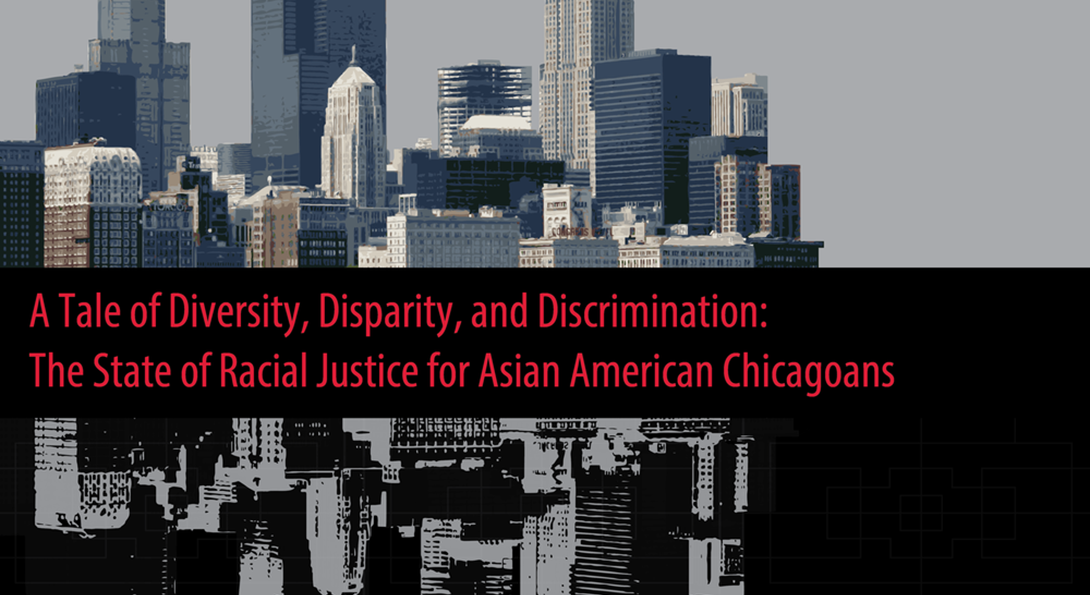New IRRPP Report Details Barriers Facing Chicago’s Asian-Americans

Despite popular stereotypes that Asian-Americans are a "model minority" unaffected by racial discrimination, a new report from University of Illinois at Chicago researchers details the barriers that Chicago's Asian-Americans face due to racial inequities in housing, education and labor.
"A Tale of Diversity, Disparity, and Discrimination: The State of Racial Justice for Asian AmericanChicagoans" also highlights major demographic changes in Chicago's Asian-American community, which is the city's most diverse and fastest growing racial/ethnic group.
The report was developed by UIC's Institute for Research on Race and Public Policy in partnership with UIC's Great Cities Institute and Asian Americans Advancing Justice Chicago. Metropolitan Family Services, a leading human services agency, commissioned the work.
"The findings present multiple ways that the lives of Asian-Americans in Chicago are deeply affected by racial inequity," said William Scarborough, report co-author and research assistant at the institute. "As the size and influence of this community continues to grow, the report can help inform ongoing discussions on racial equity in the city."
Key findings include:
Demographic change:
- Between 2000 and 2010, Chicago's Asian-American population grew 16 percent. In the same period, the population of whites and blacks decreased, and the population of Latinos grew by 3.3 percent.
- Chicago has the seventh-largest Asian-American population among major cities in the U.S., with a population of more than 160,000.
Housing:
- Asian-Americans, who reside primarily in Chicago’s Southwest and far North Side neighborhoods, are highly segregated from blacks and Latinos, and moderately segregated from whites.
- Like other racial/ethnic groups in Chicago, Asian-Americans tend to live around people of the same race as themselves, but they face significant difficulties accessing home financing, even when attempting to move to more diverse neighborhoods.
- Asian-Americans are less likely than whites to be approved for home loans, especially when those homes are in predominantly white neighborhoods.
Education:
- Asian-Americans are about equally as likely to have a college degree as whites, but they are twice as likely to have never graduated high school.
- Educational attainment varies significantly by Asian-American ethnicity. The majority of Indian and Korean Chicagoans have a college degree, while more than one-fifth of Chinese, Vietnamese and Cambodian Chicagoans have less than a high school diploma.
- Asian-Americans receive lower financial returns for advanced educational degrees. Asian-Americans with a college degree earn only $10 an hour more than Asian-Americans whose highest level of education is less than high school. For whites, this return on education is $15.
Economics:
- After accounting for personal and work-related factors, Asian-Americans are paid 7 percent less than whites, and this racial wage gap exceeds 20 percent in the retail and transportation industries.
- Asian-Americans are 17 percent less likely than equally situated whites to work as a manager and among college degree holders, they are 25 percent less likely than whites to work as a manager.
"By highlighting multiple challenges facing Asian-Americans in Chicago, this report reveals yet another layer of racial inequity in the city, while also serving as a critical document to inform local policy that improves the lives of all Chicago residents," said co-author Amanda Lewis, director of the institute and professor of African American studies and sociology.
"In shedding a light on the challenges Asian-Americans face and amplifying expert perspectives on their experiences, this report provides an invaluable resource to inform not only Metropolitan Family Services, but also organizations across Chicagoland in more effectively providing integrated services to strengthen a key community in our area," says Ric Estrada, president and CEO of Metropolitan Family Services. "When we empower one community, we're empowering our entire city."
The report also features expert commentaries on various issues affecting Asian-Americans in Chicago. These commentaries provide perspectives on Asian-Americans' experience in higher education, civic engagement in Asian-American communities, health outcomes for Asian-Americans, and the impact of public policy and activism on racial equity.
Reflecting on the implications of the report in his commentary, Mark Martell, director of UIC's Asian American Resource and Cultural Center, writes, "This report gives voice to a historically overlooked racial group and provides direction for the overdue dialogue on the needs of Asian-American communities."
In addition to Martell, other commentary authors are Brandon Lee, communications and research coordinator at Asian Americans Advancing Justice Chicago; Mansha Mirza, UIC assistant professor of occupational therapy; and Kathleen Yang-Clayton, UIC clinical assistant professor of public administration.
Iván Arenas, associate director for community partnerships in the institute, is also a co-author on the new report that serves as a follow up to the 2017 report, A Tale of Three Cities: The State of Racial Justice in Chicago, which detailed the divergent conditions for blacks, Latinos and whites in the intersecting domains of housing, economics, education, justice and health.